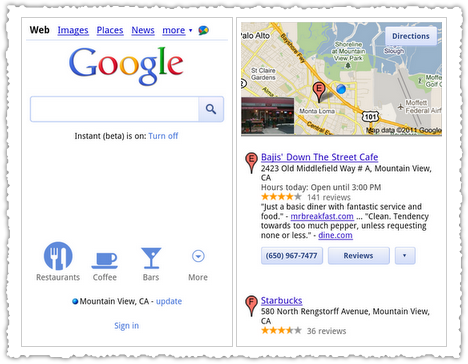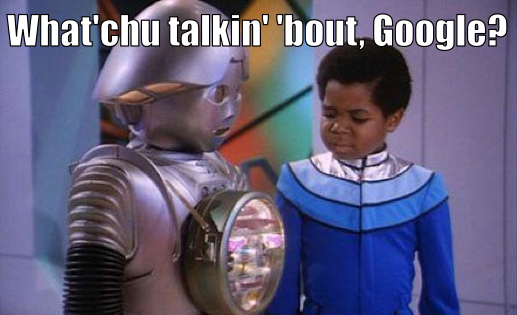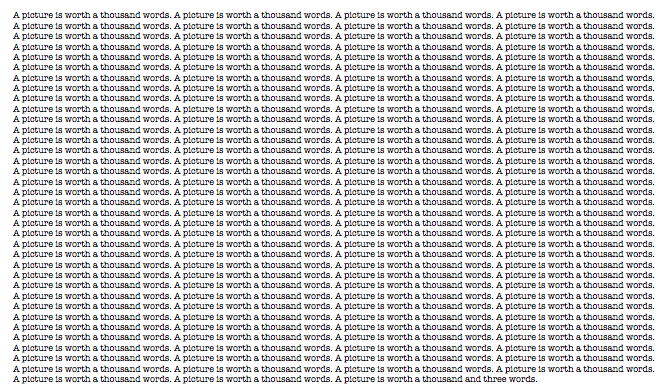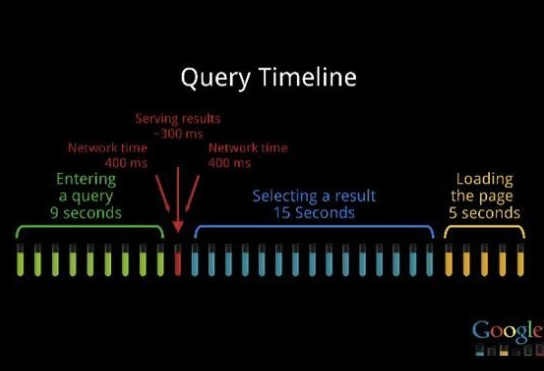What did the announcements made at Inside Search really mean for the future of search and SEO? More than meets the eye.
Mobile Search
The key to Google’s mobile announcements is that the human computer interface is being streamlined based on the platform and query intent.
Google developed shortcuts for specific types of mobile searches, essentially providing ways to make searches with certain types of intent super efficient. These searches are now performed through a combination of location and icon selection.
No words necessary.

Making it easier to search is important, but predicting query intent is even more powerful. If you’re not thinking about query intent, you’re not doing your job.
Voice Search
Voice search on desktop devices is another change in the human computer interface. Unlike mobile, this time it’s encouraging more words, not less.

The actual voice search capability is impressive but I’m more interested in how it might change keyword targeting and keyword research. User syntax is a crucial part of keyword research. Do people search on your topic using this word or that word? What words are they using to modify or reformulate their queries?
The answers to those questions are bound to change as voice search becomes a greater part of the equation. In short, you speak different then you write. This change in user syntax may not happen overnight, but I believe that as voice search becomes more prevalent we’ll be looking at different types of user syntax and, potentially, a shift in how long tail content is accessed.
Image Search
Images are becoming a connective tissue on the Internet. Whether it’s Flickr, mlkshk, Color, Instagram, Photobucket, iStockphoto, deviantART, We Heart It, Pinterest or any number of other sites and services, images are ubiquitous.
I’m an unabashed LOLcats fan and can envision a future where we communicate through a combination of memes. Think hieroglyphs for the Internet age. But I digress.

The trite phrase is that a picture is worth a 1000 words. Yet, I don’t think Google’s at the point where images alone are meaningful. The pixel matching algorithm may be quite good but those pictures still need words to describe them. File names, captions, alt text, anchor text, page content and other descriptors are necessary to provide context and results.
The drag and drop image search interface is a big change. But basic image optimization will remain important and likely increase in importance in the future.
Instant Pages
Speed. Google is consumed with reducing the time it takes between seeking and finding knowledge. Reducing the load time of a SERP click by pre-rending the page certainly supports this mission and improves user experience. Yet, I think there’s an ulterior motive.
Google wants to get better at predicting quality.

We know that Google measures and likely uses the pogostick rate as a benchmark for satisfaction, which plays an important part in determining search quality. The problem with the pogostick rate was the variable load speed of the target page.
Was the pogostick rate a measure of the quality of the content or on how quickly that content was delivered?
The first way Google looked to solve this was by convincing sites to get faster. So they talked about speed as a signal and built us all that pretty graph in Google Webmaster Tools with the crazy benchmark of 1.5 seconds. Most of us made headway on speed but not enough to satisfy Google.
Google figured out a way to do it themselves and meet their own 1.5 second benchmark. Now the pogostick rate for these pre-rendered clicks are pure. Google has removed the speed of delivery as a mitigating factor, giving them more confidence in the pogostick rate as a measure of content satisfaction.
Instant Pages should help Google improve overall search quality.
TL;DR
Google is changing the way we search though vastly different human computer interfaces. They’re looking to make it easier and faster to match query intent with value. If the way we search is changing, you better believe SEO is changing too. Monolithic, text only, cookie-cutter SEO devoid of intent analysis will become less and less effective.
SEO isn’t dead, it’s just getting more interesting.
The Next Post: What is a C Block IP Address?
The Previous Post: Google Related Searches

2 trackbacks/pingbacks
Comments About The Future of Search and SEO
// 3 comments so far.
Alan Bleiweiss // June 19th 2011
Love the emphasis on intent analysis there. Anyone who doesn’t understand that all these changes (and more) are pointing to stronger, more diverse intent analysis is the new reality, is going to miss out more than ever.
aj // June 24th 2011
Absolutely true Alan. Intent analysis and matching intent with relevance is the new SEO model.
jock mctavish // February 14th 2014
good post. i would like to bring forward a couple of long standing observations on search. just a couple of ideas for the mix.
1. date. it’s a major difficulty in relevance not to have dating. sometimes you want a time frame. newest is not only search. docs have integral many datings. could you not process what signatures there might be and deliver as a probability of date??
2. in the 80s i read a paper by a woman professor at a university at/near illinois. sorry can’t be exact. they were experimenting with a value system for a knowledge database and were also focused on quality not mere authority or majority. their idea was that voting was weighted in favour of numbers but also of qualifications so that a good idea from a student might rise to the top of a search if enough of his peers at lower rank or a professor or two of high qualifications said the idea was top notch. the converse was true as well.
Sorry, comments for this entry are closed at this time.
You can follow any responses to this entry via its RSS comments feed.